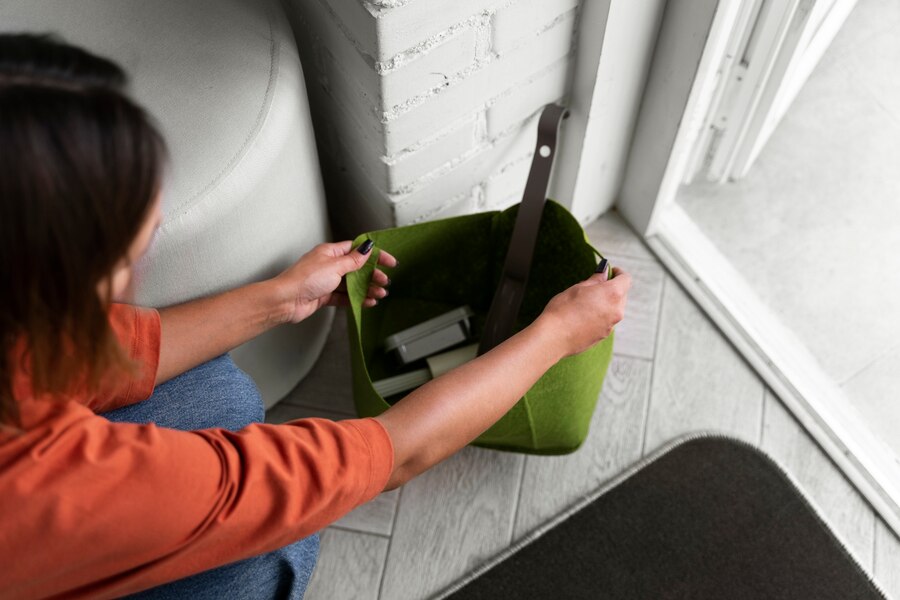Water damage, whether from a burst pipe, roof leak, or flood, can cause serious structural problems in your home. However, one of the most insidious consequences of water damage is mold growth. Mold thrives in moist environments, and if water damage isn’t addressed promptly and thoroughly, mold can spread quickly, leading to health risks and additional repair costs. In this article, we’ll explore the critical steps homeowners should take to prevent mold growth after experiencing water damage, and how professional restoration services can ensure a safe, mold-free home.
Understanding Mold Growth After Water Damage
Mold spores are naturally present in the air, but they require moisture to grow. When water damage occurs, whether from internal sources like leaking pipes or external ones like flooding, it creates the perfect environment for mold to thrive. Mold can begin growing within 24 to 48 hours after water damage, making it essential to act quickly to prevent its spread.
Common Types of Mold After Water Damage:
- Black Mold (Stachybotrys): Known for its toxicity, black mold is often associated with severe water damage and is particularly dangerous if left untreated.
- Aspergillus: This common mold type can grow in various conditions and is often found in homes after water damage.
- Penicillium: Known for its rapid growth on water-damaged materials, Penicillium can spread quickly if moisture is not properly removed.
1. Acting Fast: Time is Critical
The first and most important step in preventing mold growth is addressing water damage immediately. Mold can start growing within a day, so quick action is essential to minimizing the damage.
- Water Extraction: As soon as water damage occurs, it’s crucial to remove standing water as quickly as possible. Using pumps or wet vacuums, extract the water from all affected areas, including carpets, flooring, and basements. The longer water sits, the higher the likelihood of mold growth.
- Drying the Area: After removing the water, the next step is drying the affected areas thoroughly. Industrial-strength fans, dehumidifiers, and air movers can help remove moisture from the air and speed up the drying process. Don’t rely on natural evaporation alone, as this can take too long and allow mold to form.
2. Remove and Replace Damaged Materials
Certain materials in your home, such as carpets, drywall, and insulation, are highly porous and can absorb water easily. These materials often need to be removed if they’ve been exposed to water for too long, as they can harbor mold even after drying.
- Carpet and Padding: If water has soaked into the carpet and padding, these materials may need to be removed and replaced, especially if the water was contaminated. Wet carpet can become a breeding ground for mold, particularly in the padding underneath.
- Drywall and Insulation: Water-damaged drywall and insulation often need to be cut out and replaced to prevent mold from spreading. Mold can grow inside walls where it’s hidden from view, causing structural damage over time.
3. Control Humidity Levels
Mold thrives in environments with high humidity, so controlling the moisture in your home is crucial after water damage. Keeping the humidity level below 50% helps prevent mold from growing.
- Use Dehumidifiers: After water extraction, dehumidifiers should run continuously to keep the air dry. In rooms like basements and bathrooms, which are prone to higher humidity levels, it’s particularly important to use dehumidifiers.
- Ventilation: Open windows and doors to allow air to circulate, and use exhaust fans in areas like bathrooms and kitchens. Proper ventilation helps remove moisture from the air and reduce humidity, especially in the early stages of water damage recovery.
4. Clean and Disinfect the Area
Thoroughly cleaning and disinfecting areas affected by water damage is essential to prevent mold spores from taking root. Mold spores can still be present in damp areas even after the water is removed, so proper cleaning is critical.
- Disinfect Surfaces: Use mold-killing solutions such as bleach or EPA-approved disinfectants to clean all surfaces that were exposed to water. This includes floors, walls, and furniture. Make sure to wear protective gear like gloves and masks when handling cleaning chemicals.
- Clean Air Ducts: After water damage, mold spores can accumulate in the HVAC system and spread throughout your home. Cleaning the air ducts prevents mold from circulating in the air and affecting indoor air quality.
5. Monitor for Mold Signs
Even after drying, cleaning, and disinfecting, it’s important to continue monitoring for any signs of mold growth in the weeks following water damage. Early detection is key to preventing a small mold problem from becoming a major infestation.
- Visual Inspection: Check for visible signs of mold, such as black, green, or white spots on walls, ceilings, or flooring. Also, watch for any musty odors, which are often a sign of hidden mold.
- Professional Mold Testing: In cases of severe water damage, it may be wise to hire professionals to conduct mold testing. Mold can sometimes grow in hidden places, such as behind walls or under floors, and testing can detect mold that may not be visible.
6. Consider Professional Restoration Services
In many cases, the best way to prevent mold after water damage is by hiring professional water damage restoration services like Dry Pros. These professionals have the equipment and expertise to thoroughly dry, clean, and restore your home, ensuring that mold doesn’t become a problem.
- Professional Drying Equipment: Restoration companies use industrial-grade fans, dehumidifiers, and moisture meters to dry areas completely, even in hard-to-reach places. This helps eliminate any lingering moisture that could lead to mold growth.
- Mold Prevention Treatments: Some restoration companies apply mold prevention treatments to vulnerable areas after water damage. These treatments kill any remaining mold spores and create a protective barrier that prevents mold from growing in the future.
Conclusion
Preventing mold growth after water damage is crucial for maintaining a safe and healthy home. By acting quickly, removing damaged materials, controlling humidity, and thoroughly cleaning affected areas, homeowners can significantly reduce the risk of mold. However, in cases of severe water damage, professional restoration services offer the most reliable protection against mold and its long-term effects. Taking these proactive steps not only protects your home’s structure but also safeguards the health of your family.










